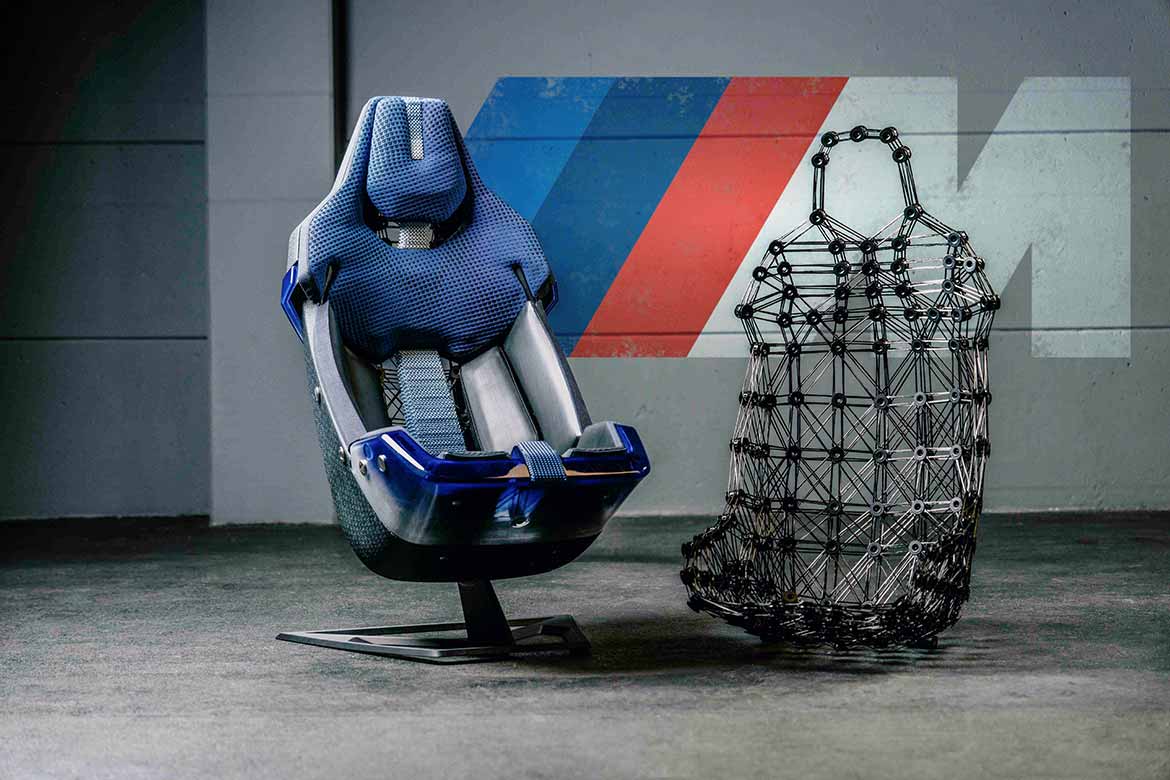2024 年 8 月 7 日
+++座椅是宝马集团及其合作伙伴如何开发创新材料的证明点+++一窥未来的流程+++旨在减少排放和节约资源+++
美国密歇根州。在 2024 年汽车研究中心研讨会的颁奖典礼上,Altair 向宝马集团颁发了今年享有盛誉的可持续流程类别 Enlighten 奖,以庆祝这家高端制造商在创新方面取得的进步。该年度奖项旨在表彰全球汽车行业创新的轻量化结构和可持续性解决方案,这些解决方案可减少碳排放、最大限度地减少水和能源消耗,并促进材料的再利用和回收。
宝马集团凭借宝马 M 远见材料座椅获得该奖项,理由是该研究项目是未来产品开发的先驱:突出的成就是可持续的座椅设计和对整个产品生命周期的关注,使其成为全球汽车领域最具创新性和远见的可持续发展之一。
除了项目所有者 BMW M GmbH 之外,BMW Group Designworks 还与 BMW 设计团队合作,负责座椅的设计、颜色和材料概念。该项目与多家合作伙伴密切合作完成:Automotive Management Consulting GmbH、Bcomp Ltd、Gradel Lightweight Sàrl 和 Lasso Ingenieurgesellschaft mbH。
关键主题:循环设计、轻量化结构和有吸引力的产品
作为未来材料开发研究的平台,该获奖席位重点关注以下关键主题:
首先,推动植物材料的使用,作为循环设计的一部分,提高二次原材料的份额,并提高生命周期末端的可回收性。
此外,该团队还致力于开发一款在外观、质量、轻量化结构和功能方面都极具吸引力的产品。简约的设计让轻量化的座椅结构清晰可见,凸显了其作为核心部件的地位。密集的生命周期评估 (LCA) 在每个开发阶段都对设计进行了补充。
BMW M GmbH 轻量化设计与可持续性创新经理 Falco Hollmann 接受了该奖项:“我们今天展示了利用现有技术和材料在未来可以实现哪些目标,从而将我们的减排和资源节约工作提升到一个新的水平。这不仅仅是材料替代,最重要的是循环设计。”
使用天然材料
该项目的核心前提是在当今框架内实现向未来的跨越。对具有高 SQR(二次原材料配额)的可用材料类别的评估表明,天然材料是理想的补充。例如,座椅采用天然纤维、纤维复合材料、皮革替代品和藻类聚合物。
碳足迹减少 90%
由于使用了超轻、机器人缠绕的纤维复合座椅支撑结构和天然材料以及高回收率,该座椅的二氧化碳排放量比目前生产的 BMW M 碳纤维桶形座椅低 90%。此外,较低的模块复杂性和按类型分组使用材料使座椅在其生命周期结束时更容易回收。所采用的增材制造工艺也是开创性的:一项新技术使 M BMW Visionary Materials Seat 完全消除了支撑结构、化学后处理和精加工成为可能。其他优先事项包括扁平的价值创造链和最少的精加工步骤,以节省能源和节约资源。
未来流程的经验教训
“我们最大的经验之一就是平衡,换句话说,就是如何对我们的流程链进行建模,以生成缺失的原始数据,”宝马集团全车生命周期开发主管 Roberto Rossetti 解释道。“获得的数据提供了新的见解,无论是在今天的负面因素方面,还是在明天的流程设计方面。这种经验为持续改善可持续性和开发具有前瞻性的移动创新解决方案奠定了坚实的基础。”
BMW M Visionary Materials Seat wins 2024 Altair Enlighten Award in the Sustainable Process category.
07.08.2024
+++ Seat as proof point of how BMW Group and partners develop innovative materials +++ Glimpse into the processes of tomorrow +++ Aiming to reduce emissions and conserve resources +++
Michigan, USA. At an award ceremony at the 2024 Center for Automotive Research Seminar, Altair presented the BMW Group with this year’s prestigious Enlighten Award in the Sustainable Process category, celebrating the premium manufacturer’s progress in innovation. The annual award recognizes innovative lightweight construction and sustainability solutions across the global automotive industry that reduce carbon emissions, minimize water and energy consumption, and promote materials reuse and recycling.
The BMW Group received the award for the BMW M Visionary Materials Seat on the grounds that the research project is a precursor of future product development: Standout achievements were the sustainable seat design and the focus on the entire product lifecycle, making it one of the most innovative and visionary sustainable developments in the global automotive sector.
In addition to BMW M GmbH as the project owner, BMW Group Designworks was responsible for the design, color and material concept of the seat in collaboration with the BMW design team. The project was realized in close cooperation with several partners: Automotive Management Consulting GmbH, Bcomp Ltd, Gradel Lightweight Sàrl and Lasso Ingenieurgesellschaft mbH.
Key themes: design for circularity, lightweight construction and attractive product
As a platform for research on the development of future materials, the award-winning seat focuses on the following key themes:
First, driving the use of plant-based materials and, as part of design for circularity, raising the share of secondary raw materials and increasing recyclability at the end of the lifecycle.
In addition, the team aimed to develop an attractive product in terms of its appearance, quality, lightweight construction and functionality. The minimalist design leaves the lightweight seat structure visible, highlighting its status as a core component. Intensive lifecycle assessments (LCA) complemented the design at each stage of development.
Falco Hollmann, Innovation Manager Lightweight Design & Sustainability at BMW M GmbH, accepted the award: “We are showing today what will be possible tomorrow with existing technologies and materials in order to take our efforts to reduce emissions and conserve resources to the next level. This is about more than just substituting materials; it is above all about designing for circularity.”
Use of natural materials
The core premise of the project was to make the leap to the future while working within today’s framework. The evaluation of available material classes with a high SQR (secondary raw material quota) showed that natural materials are the ideal complement. For example, the seat features natural fibers, fiber composites, leather alternatives and algae-based polymers.
Carbon footprint reduced by 90 percent
The seat’s CO2e footprint is 90 percent lower than a BMW M carbon bucket seat made today, thanks to the use of ultra-light, robotically-wound fiber composite seat support structures and materials of natural origin as well as the high recycling rate. In addition, lower module complexity and the use of materials grouped by type make it easier to recycle the seat at the end of its lifecycle. The additive manufacturing processes used are also groundbreaking: A new technology made it possible to completely eliminate support structures, chemical post-treatment and finishing from the M BMW Visionary Materials Seat. Other priorities included a flat value creation chain and a minimum of finishing steps to save energy and conserve resources.
Lessons learned for future processes
“One of our biggest lessons was the balancing, in other words, how to model our process chain to generate missing primary data,” explains Roberto Rossetti, Head of Development Total Vehicle-Lifecycle at the BMW Group. “The data obtained provides new insights, both in terms of today’s negative contributing factors and the design of tomorrow’s processes. This experience provides a solid foundation for continuously improving sustainability and developing innovative solutions for forward-thinking mobility.”

